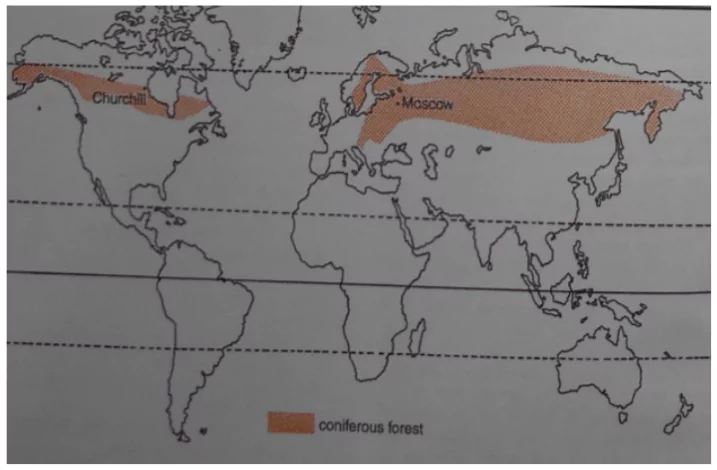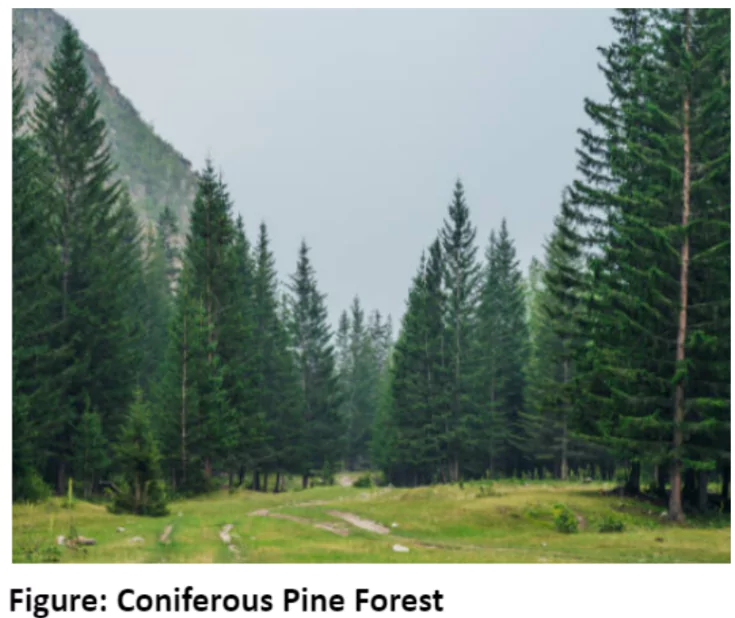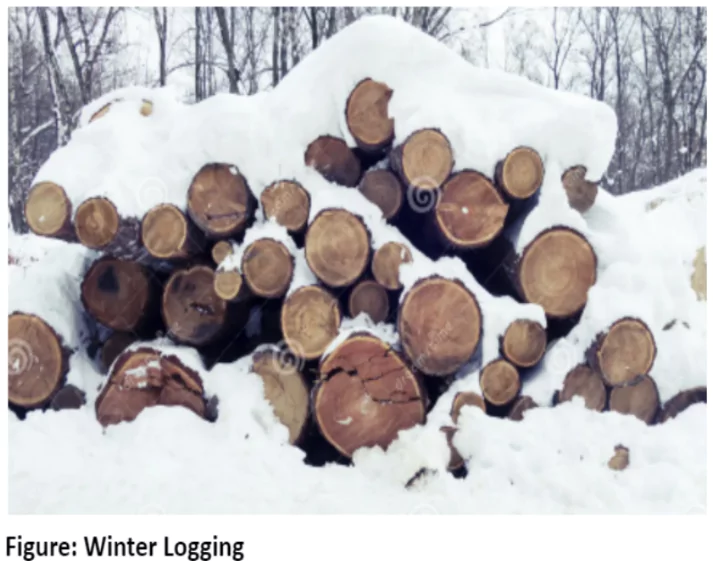Introduction
The cool temperate continental climate, known as the Siberian climate, shapes the northern regions of North America, Europe, and Asia with its extreme temperatures and vast coniferous forests. Characterized by bitterly cold winters and brief, cool summers, this climate fosters unique adaptations in vegetation and drives economic activities like lumbering. From the taiga forests of Siberia to the rugged landscapes of Canada, the Siberian climate defines the livelihoods and ecosystems of these regions.
Overview of Siberian Climate: Characteristics, Vegetation, and Economic Life
Distribution
- Northern Hemisphere: Experienced only in the Northern Hemisphere.
- North America (from Alaska across Canada into Labrador), Europe and Asia (between 50° and 70° N and S of the equator), where continents are spread broadly from east to west.
 Transition: It transitions to the Arctic tundra towards the poles and gradually becomes milder towards the south, eventually merging into the temperate Steppe climate.
Transition: It transitions to the Arctic tundra towards the poles and gradually becomes milder towards the south, eventually merging into the temperate Steppe climate. - Coniferous Forests: This climate is characterized by evergreen coniferous forests, forming a continuous belt across North America, Europe, and Asia.
- Taiga Forest: The largest expanse of this forest is known as the taiga found in Siberia.
- In Europe: similar climates and forests are found in Sweden and Finland, with smaller pockets in Germany, Poland, Switzerland, Austria, and other high-altitude regions.
- In North America: Extends from Alaska through Canada into Labrador, and even reaches high elevations in the Rocky Mountains.
- Absent in the Southern Hemisphere: The Siberian Climate is missing in the southern hemisphere because the southern continents are narrower in the high latitudes.
- Maritime influence makes winters less harsh, so coniferous forests are only found in the mountainous areas of southern Chile, New Zealand, Tasmania, and southeastern Australia.
Enroll now for UPSC Online Course
Climate
- Temperature: Long and extremely cold winters (-30 to -40°C) and short, cool summers; Occasional violent cold polar winds, like Canadian blizzards and Eurasian buran.
- Transition seasons like spring and autumn are brief. Winter temperatures always stay below freezing.
- Example: Due to its extreme temperatures, Siberia is often referred to as the “cold pole of the earth,” with Verkhoyansk recording temperatures as low as -67°C.
- Rainfall: Relatively dry year-round, low annual precipitation, mainly in the form of snow ;
- These regions receive 35 to 70 cm of annual precipitation, with most falling as snow in winter.
- Mainly from June to September, sustaining tree growth despite low evaporation rates.
- Snowfall: It varies, with Siberia and Taiga regions accumulating several feet, impacting spring thaw and flood patterns.
- Snow acts as insulation against extreme cold and provides moisture for vegetation growth, enabling limited agriculture in some areas.
Vegetation
- Coniferous Forests: are characterized by uniform, straight trees growing up to 100 feet tall, with widely spaced trees nearing the poleward limit giving way to tundra vegetation.
- Evergreen Species: Most conifers are evergreen, with a two-year fructification cycle and leaves persisting for up to five years.
 Adaptations to Sub-Arctic Conditions: Their conical shape prevents snow accumulation and offers little resistance to winds.
Adaptations to Sub-Arctic Conditions: Their conical shape prevents snow accumulation and offers little resistance to winds.
- Conifers have small, thick, needle-shaped leaves to minimize transpiration, with sparse undergrowth due to poor, acidic podzolized soils, slow decomposition, and limited sunlight.
- Dominance in Mountainous Environments: Conifers dominate In mountainous regions where altitude lowers temperatures.
- Steep slopes with poor soil may not support them.
- Four Major Types of Conifers: Pine, fir, spruce, and larch are the main species, facilitating efficient commercial forest management due to their presence in pure stands.
- Other Species: Mosses, lichens and sledges in more sheltered spots, stunted birches, dwarf willows, hardy grasses and reindeer moss are found.
- Tundra, taiga (boreal forest), and grasslands adapted to harsh conditions.
Economic Life
- Lumbering is the primary economic activity, utilizing vast coniferous forests; Softwood logs are transported downstream via thawed rivers in spring.
- A thriving lumbering industry, primarily reliant on vast coniferous forests for various products such as sawn timber, plywood, and fuel.
- Agriculture is limited in these regions, prompting lumbering to replace farming; even farmers supplement income with part-time logging in winter.
- Winter Logging:
- Typically occurs in winter when sap flow ceases, aided by snow cover for easier logging and haulage;
- In Siberia, where rivers freeze for much of the year, saw-mill development is hindered; yet, the Northern Sea Route and hydroelectric power aid industry growth.
 Industries: Conifers thrive in the harsh Siberian climate, making Eurasia and North America prime sources of softwood for various industries like construction, furniture, and paper production.
Industries: Conifers thrive in the harsh Siberian climate, making Eurasia and North America prime sources of softwood for various industries like construction, furniture, and paper production.
- Untouched Coniferous Forests: Vast coniferous forests in Canada, eastern Europe, and Asiatic Russia remain untouched, with only accessible areas logged.
- Example: Pine, fir, larch, and spruce are harvested for softwood.
- Leading Softwood Producers: include the USSR, USA, Canada, and Fenoscandian countries.
- Paper and pulp industry (Canada and the U.S.A.)
- USA: leads in wood pulp production.
- Canada: dominates in newsprint.
- Agriculture: It is challenging with limited crops due to extreme cold and short growing seasons.
- Some cereals and root crops are grown in sheltered areas.
- Tribes: Samoyeds, Yakuts, and some Canadians, depend on hunting, trapping, and fishing for their livelihoods.
Enroll now for UPSC Online Classes
Conclusion
- The Siberian climate shows how nature and people can adapt to tough conditions. It supports diverse life, from tall conifer trees to resilient tribes.
- Despite its challenges, the Siberian climate continues to shape the cultural, economic, and environmental landscapes of the northern hemisphere, reminding us of the enduring power of nature.
![]() May 1, 2024
May 1, 2024
![]() 2315
2315
![]() 0
0
 Transition: It transitions to the Arctic tundra towards the poles and gradually becomes milder towards the south, eventually merging into the temperate Steppe climate.
Transition: It transitions to the Arctic tundra towards the poles and gradually becomes milder towards the south, eventually merging into the temperate Steppe climate.  Adaptations to Sub-Arctic Conditions: Their conical shape prevents snow accumulation and offers little resistance to winds.
Adaptations to Sub-Arctic Conditions: Their conical shape prevents snow accumulation and offers little resistance to winds.
 Industries: Conifers thrive in the harsh Siberian climate, making Eurasia and North America prime sources of softwood for various industries like construction, furniture, and paper production.
Industries: Conifers thrive in the harsh Siberian climate, making Eurasia and North America prime sources of softwood for various industries like construction, furniture, and paper production.